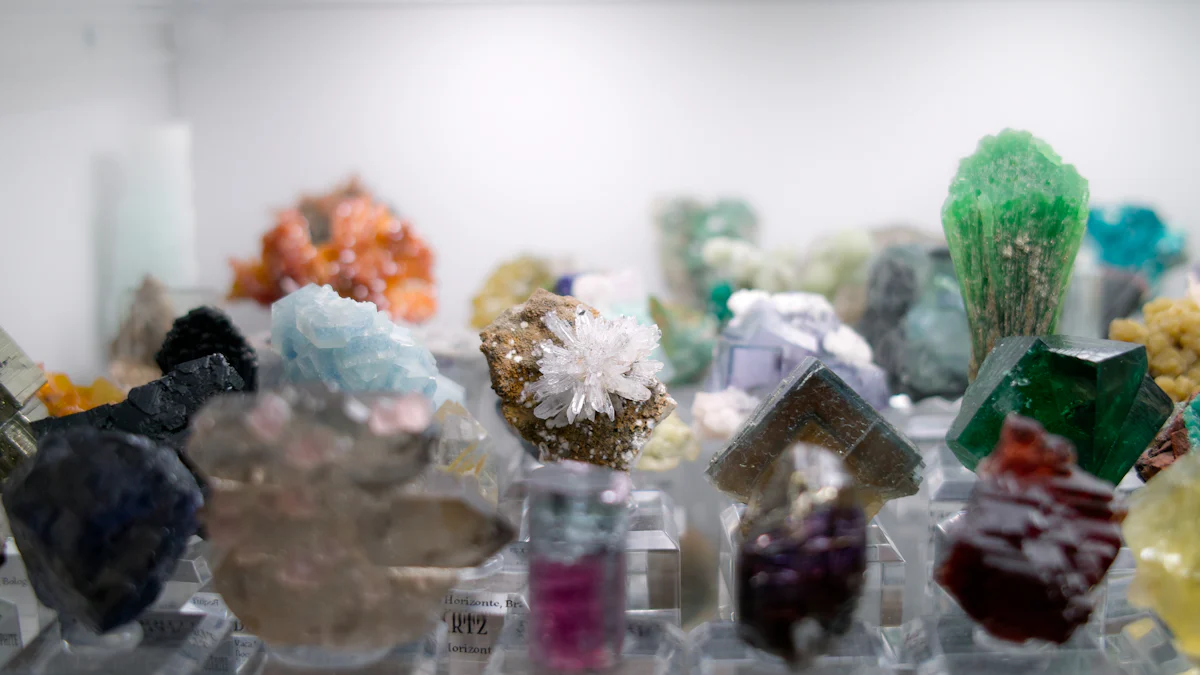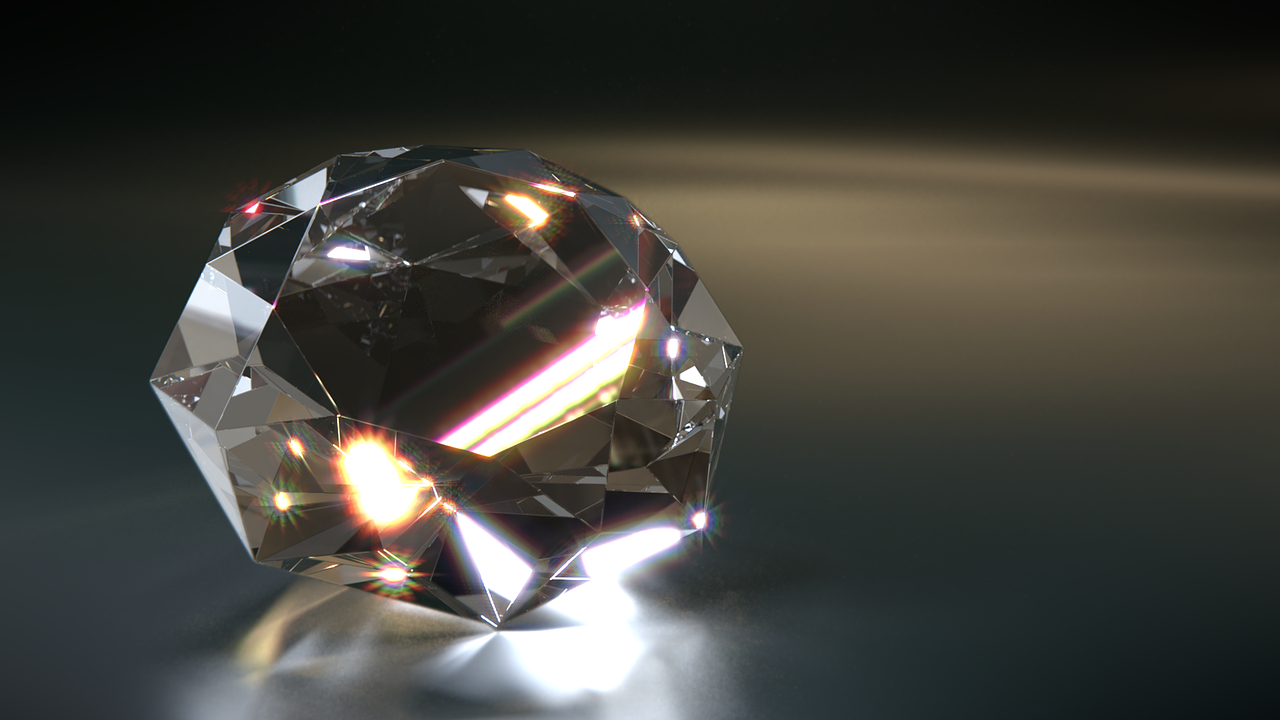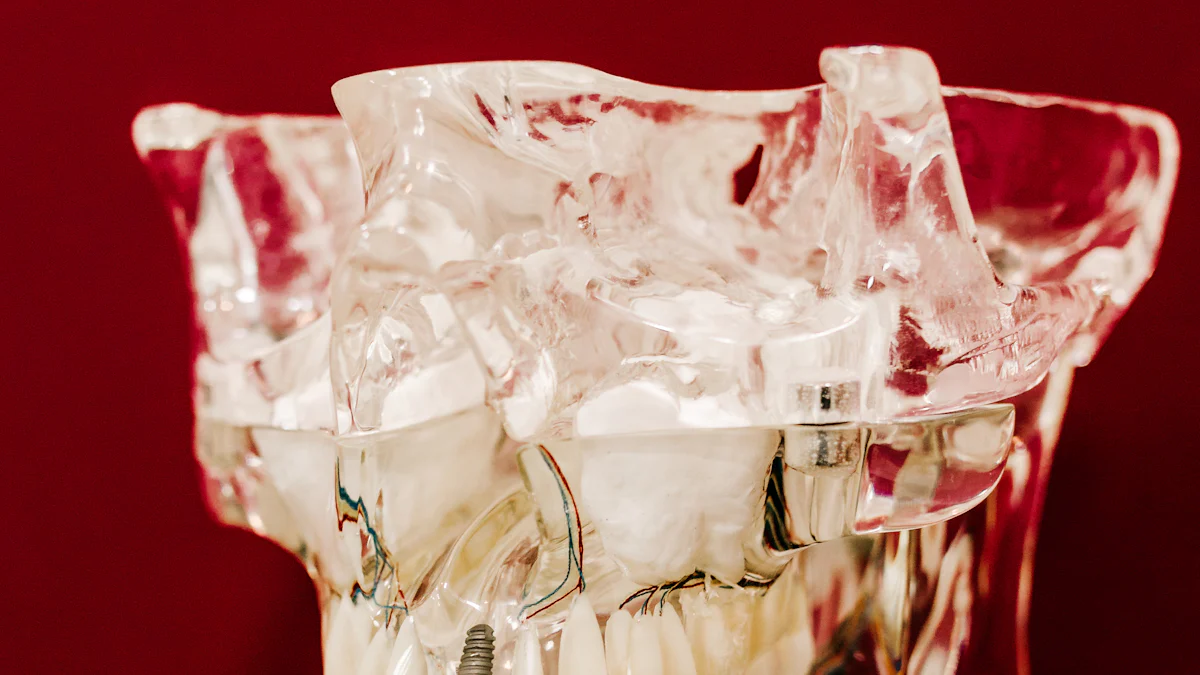Gems for Kids: Mineral Crystals and Other Natural Treasures

Gems have a special magic. Kids love these shiny treasures. Bright colors and cool shapes excite young minds. Gems show Earth's hidden wonders. Learning about them is fun and educational. Kids can learn how gems form. This journey sparks curiosity and inspires discoveries. Explore gems and find their secrets.
The Journey from Rocks to Gems

Understanding Rocks and Minerals
What are Rocks?
Rocks are Earth's solid parts. You see rocks everywhere, like mountains and rivers. They have different minerals inside them. Each rock tells Earth's history story. Some come from cooled lava. Others form from sediment layers. Natural processes can change rocks over time.
What are Minerals?
Minerals are natural things with a set structure. They have special traits like color and hardness. You find them in rocks. Quartz, feldspar, and mica are common ones. Minerals make crystals that look nice and can be valuable. They help in making gems.
The Transformation Process
How Rocks Become Gems
Gems start as regular minerals. Earth changes these into gems through processes. Heat and pressure deep inside cause this change. Some gems come from volcanic rocks, others from metamorphic ones. Water helps make some gems near the surface too. This takes millions of years.
The Role of Heat and Pressure
Heat and pressure work like nature's artists. They turn minerals into pretty gems. High heat melts rocks so minerals crystallize again. Pressure pushes them together tightly, creating dense forms. This gives gems their sparkle and colors, each telling its own creation story.
Types of Gems and Their Features
Popular Gems
Diamonds

Diamonds are known for their shine and toughness. People use diamonds in jewelry because they look nice. Diamonds are the hardest thing found in nature. This makes them great for cutting tools as well. They form deep inside Earth with lots of heat and pressure. It takes millions of years to reach the surface.
Rubies
Rubies have a bright red color that stands out. The mineral corundum makes rubies, like sapphires too. A deep red called "pigeon's blood" is very popular. Color strength and clearness affect ruby worth. Rubies need to be red enough to not be pink sapphires. They are strong enough for daily wear.
Sapphires
Sapphires come in all colors except red. Corundum also forms sapphires. They rank 9 on the Mohs hardness scale, so they're tough. Sapphires are less rare than rubies but still valuable. Blue is the most famous sapphire color, but there are yellow, green, and pink ones too.
Gem Qualities
Hardness
Hardness shows how hard it is to scratch a gem. The Mohs scale rates gems from 1 to 10. Diamonds score 10, making them the hardest gems around. Sapphires and rubies score 9, showing they last long too. Hardness helps decide how a gem can be used.
Color
Color gives each gem its special look. Different minerals make different colors happen in gems. For instance, iron and titanium turn sapphires blue while chromium turns rubies red. How bright or vivid a color is affects a gem's price.
Clarity
Clarity means how clear a gem is inside without flaws or spots called inclusions. Fewer spots mean clearer gems that cost more money too! Spots can change how a gem looks or lasts over time; jewelers check this closely with magnifiers before selling them! High clarity makes gems prettier and shinier.
Origins and Earth Science Connections
Where Do Gems Come From?
Geological Formations
Gems form in special Earth places. Deep underground, minerals change. Heat and pressure turn them into pretty gems. Volcanoes can push gems up to the surface. Water and wind help shape these treasures too.
Mining Locations
People have dug for gems a long time. The Mogok Valley in Myanmar is famous for mining gems. Emeralds from Muzo, Colombia are well-known worldwide. The Pueblo tribe found turquoise in the U.S. over 2,600 years ago. Franklin, NC, has native rubies and sapphires. Each place has its own story of finding gems.
Basic Earth Science Concepts
The Rock Cycle
The rock cycle shows how rocks change over time. Rocks melt into magma, cool into new rocks, then break down into pieces. These pieces press together to make sedimentary rocks. Heat and pressure change them into metamorphic rocks again.
Plate Tectonics
Plate tectonics shape Earth's landforms. Plates move causing quakes and eruptions. These movements create mountains and deep ocean areas. Gems often form where plates meet or shift.
Interactive Learning: Growing Crystals at Home

Easy Crystal Growing Experiments
What You Need
Want to grow crystals? Gather simple things. Get sugar, water, a pot, a spoon, a jar, and string. Use a pencil or stick too. These items help you start your crystal adventure.
How to Do It
Heat water in a pot. Add sugar slowly and stir until it stops dissolving. Pour into a jar. Tie string to a pencil and place it over the jar's top. Let the string hang in the liquid. Wait as crystals form on the string over days. Watch them grow!
The Science of Crystal Growth
Saturation Basics
Crystals form through saturation. Water holds all the sugar it can when saturated. Adding more makes it supersaturated, meaning extra sugar forms crystals as it leaves.
Lattice Patterns
Crystals grow in patterns called lattice structures. Each crystal type has its own pattern. Sugar crystals have their unique shape because atoms repeat in patterns.
Scientific Research Findings:
Research on Crystal Growth Processes and Structures shows many factors affect growth like atoms and electrons.
Interdisciplinary Crystal Growth Science is key for finding new materials and understanding physical phenomena.
Growing crystals at home is fun and teaches science too! Try it out to see what wonders you can create!
Gems and minerals have cool secrets. The change from rocks to shiny gems is exciting. Every gem shares a story about Earth's beauty. Being curious helps find new things. Kids can learn more about these natural wonders. Making crystals at home is a fun science project. Explore the world of gems and find hidden surprises. Keep asking questions and looking for answers. Earth has many amazing things waiting for you.
See Also
Ancient Egypt's Priceless Artifacts
Assist Your Children in Computer Science
A Hundred and One Amazing Science Tests
The Whole Tutankhamun: A Century of Exploration
Egypt's Priceless Artifacts: A Heritage in Images Covering Pyramids to Cleopatra

